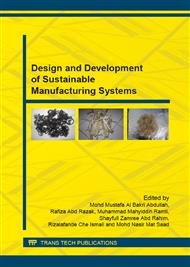p.353
p.359
p.364
p.369
p.374
p.380
p.384
p.390
p.394
Defect Segmentation of Semiconductor Wafer Image Using k-Means Clustering
Abstract:
Nowadays, quality control becomes an important issue in semiconductor manufacturing industry. The rate of production with respect to time gives a lot of issues in the industry. In most semiconductor assemblies, a lot of defects generated from various processes in semiconductor wafer manufacturing need to be inspected manually using human experts and this process required full concentration of the operators. This human inspection procedure, however, is time consuming and highly subjective. In order to overcome this problem, implementation of machine vision will be the best solution. This paper presents defect segmentation of semiconductor wafer image based on colour features with k-Means clustering algorithm which can be adopted in machine vision system. In this work, the segmentation process is carried out in two stages. The first stage comprised of clustering the pixels in the image based on their colour and spatial features. Then the clustered pixels are merged to a specific number of regions. The proposed approach is being evaluated using defected wafer image. The experimental results show that it can be used to segment the defect correctly. By using this method, it is possible to increase the computational efficiency since it will avoid feature extraction for every pixel in the image.
Info:
Periodical:
Pages:
374-379
Citation:
Online since:
November 2015
Authors:
Price:
Сopyright:
© 2015 Trans Tech Publications Ltd. All Rights Reserved
Share:
Citation:


